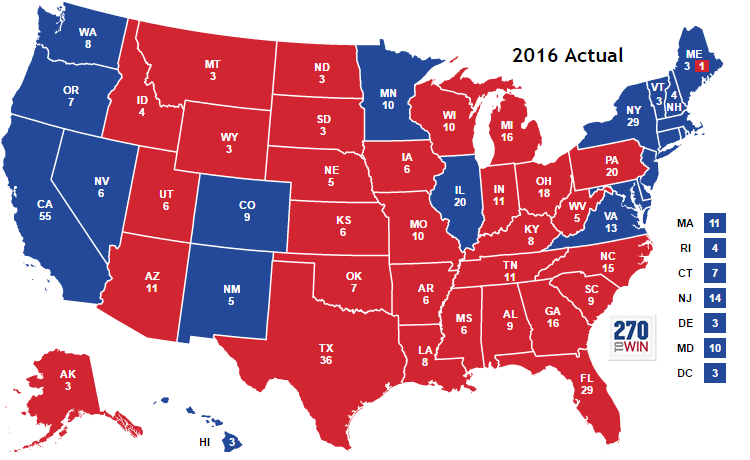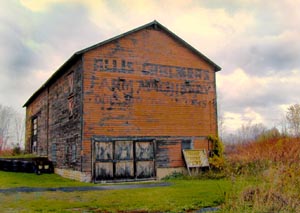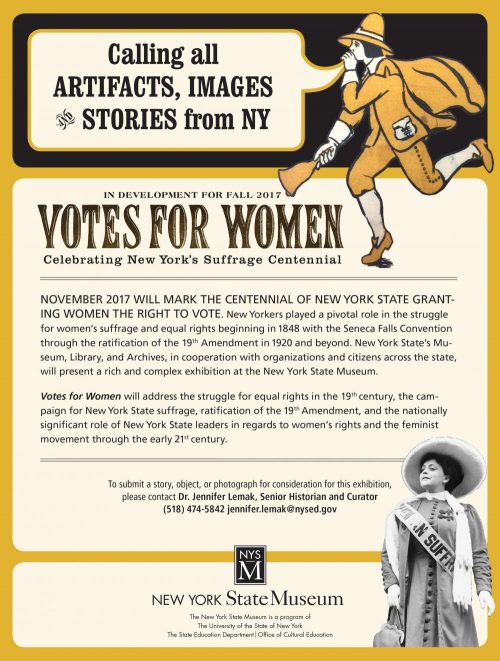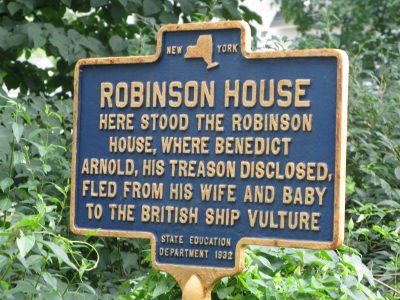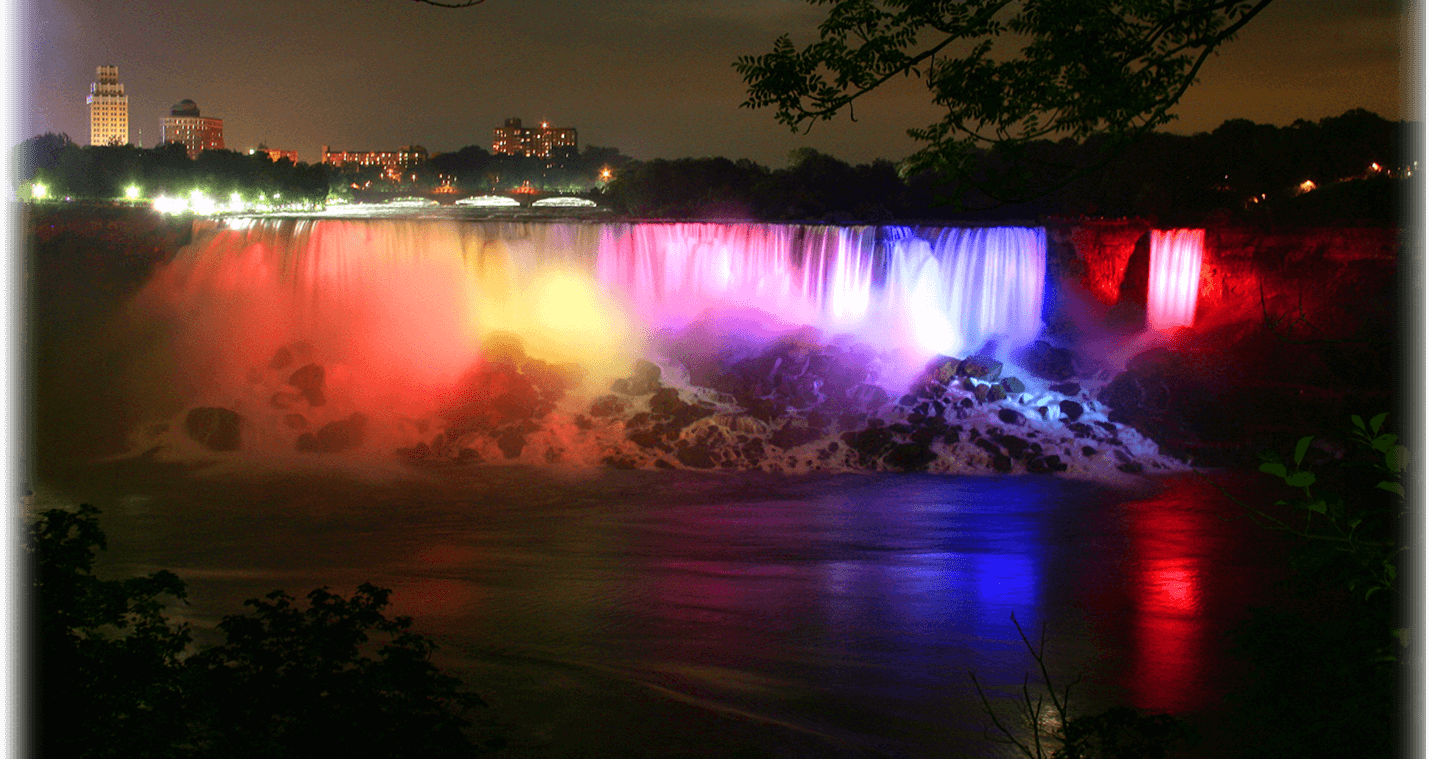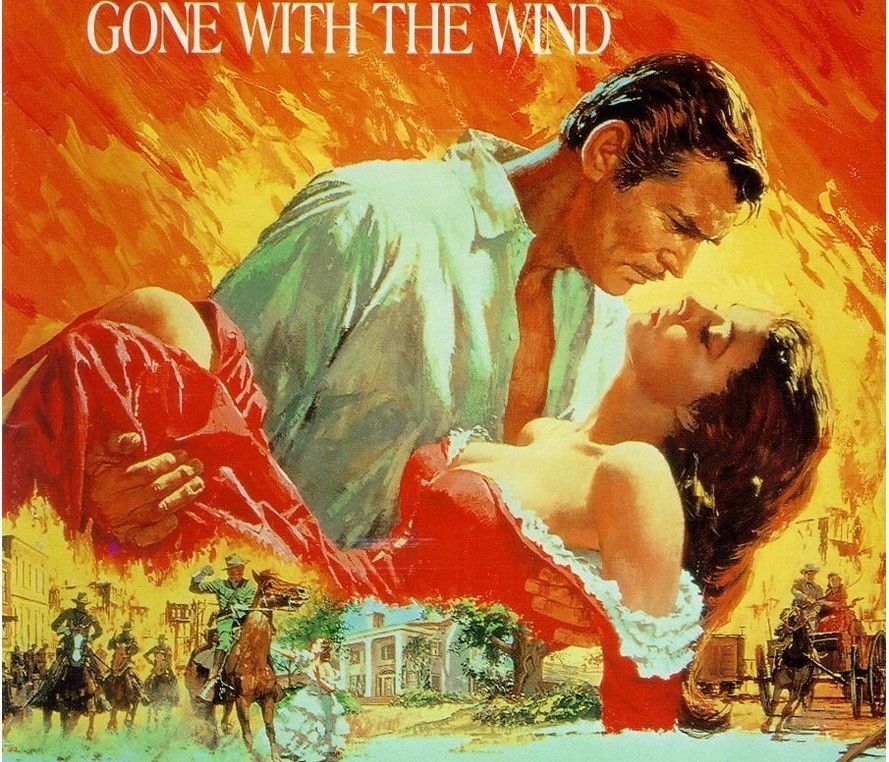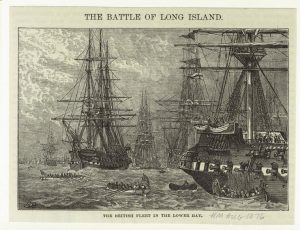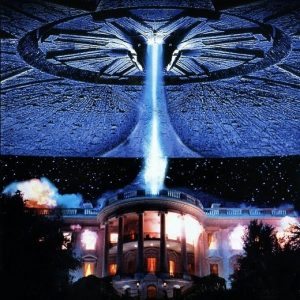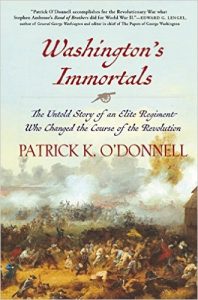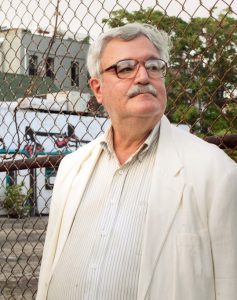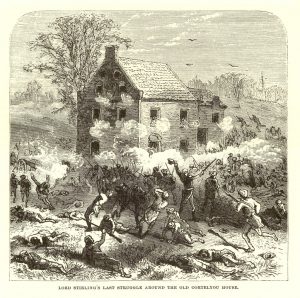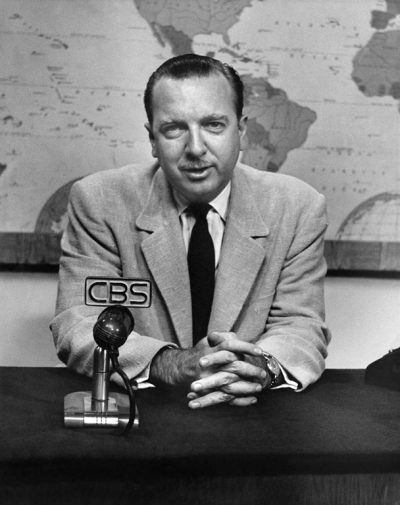
Image from Who Was Walter Cronkite
During the month of January, a number of history-related actions occurred that may be of interest to the larger history community. Below are brief notices about these items including the topics of:
- Funding
- Training
- I Love NY Signs
- State Museum
- County Meetings: Saratoga and Putnam Counties
- Indian Paths in Manhattan
1. Funding
The Fortress Niagara newsletter for December (which I received in January) contained an important funding notice. Thanks to State Senator Rob Ortt, Old Fort Niagara received a check for $10,000 to assist the fort in its educational programs. Six other museums in the county received state funding through the auspices of the State Senator as well.
What made this notice fascinating was that the funding occurred outside the REDC process. Since there are no more Member Items, I was curious as to how the State Senator was able to procure such funding for the 7 museums. The answer is that Republican senators, since they are the majority, have access to a funding pool which may be apportioned at their discretion. In effect, it works a little like Member Items. So if you are a museum or historical society in need of some funding and have a Republican State Senator, now is the time to contact that person as the budget process begins.
2. Training
In a previous post, I wrote about the need for training of municipal historians starting at the county level. I suggested a week long program in Albany involving various state agencies and a culminating reception with the Governor in the Executive Mansion. I received the following comment from one eager county historian:
When will the week-long session be given?
I am definitely interested.
Take a survey and use the numbers to advance your splendid idea.
Joseph P. Bottini
Oneida County Historian
Here is an area where it is possible to begin to develop a history community advocacy agenda. Are municipal historians interested in a state-funded training program to be held in Albany and to include the state Archives, Education, Historian, Library, Museum, Parks, I Love NY, and REDC departments so everyone knows what a municipal historian is supposed to do and the person has been trained to do it?
3. Follow-up on I Love NY Signs
Since my original post in December, there have been new developments in the SAGA OF THE SIGNS. In December the Albany Bureau of USA Today Network which had been spearheading the investigation in to the controversy, filed a FOIL with the State Comptroller’s Office for the relevant contracts entered into by the State. The documents were received last week.
The update article was published in various newspapers throughout the state. Reporter Jon Campbell’s lead sentence reads:
The state Department of Transportation used emergency highway contracts and paid out thousands of dollars in overtime to install hundreds of I Love NY highway signs ahead of July 4 weekend last year.
Normally “emergency” means “urgent highway repairs.” According to Mike Elmendorf, president and CEO of the state Associated General Contractors, this usage was “’not typical.’”
The documents reveal that the costs of the project substantially added to the almost $2 million cost for the signs themselves. For example, in the Rochester area, the cost to install the 14 signs was $300,000. In Broome, Tioga, and Otsego, $200,000 was paid but the number of signs was not provided in the documents received. In Long Island the cost was $448,153. The multi-colored signs of complex graphics cost $5,800 apiece with the smaller signs only costing $2,825.
Part of the expense was due to the rush to installation requiring weekend work.
That drew questions from Susan Malatesta, a contract management specialist with the Comptroller’s Office, who directed her staff to ask why the extra costs were necessary.
“Why pay more to get these signs up fast?,” she wrote in September 21 email.
Ultimately, DOT told the Comptroller’s Office the extra spending was to ensure the Long Island signs were up by the summer travel season. The Comptroller’s Office signed off on the spending request. Cuomo, who has been an outspoken supporter of the signs, likely got a first-hand look that weekend: He spent July 4 in the Hamptons, according to his public schedule.
Elmendorf’s words bear notice. He is a critic of the signs and said the money could have been better spent.
I think the bigger concern is using capital dollars for something that certainly has no benefit to infrastructure and, I think you could argue, has negligible benefit for tourism, because they don’t really tell you anything.
Exactly right. Cuomo has paid millions to market the Path through History concept but no money to create actual paths through history. For a person who wants to be president of the United States in a time of great national division, it is astonishing that he would engage in alternative facts and be so dismissive of the local and state history that helped make America great in the first place.
4. “NEW YORK STATE’S GREAT PLACES AND SPACES” PROGRAM AT THE STATE MUSEUM ON JANUARY 14
Representatives from state historic sites and cultural institutions provided educational hands-on activities, unique artifacts to explore, and information about upcoming events during the annual “New York State’s Great Places and Spaces” program at the New York State Museum. Participating institutions included the Adirondack Museum, Albany Institute of History & Art, Albany Pine Bush, Burden Iron Works, Civil War Round Table, Crailo State Historic Site, Franklin D. Roosevelt Presidential Library & Museum, Historic Cherry Hill, Guilderland Historical Society, Johnson Hall State Historic Site, Knox’s Headquarters State Historic Sites, New Windsor Cantonment, NYS Office of Parks, Recreation & Historic Preservation, Olana State Historic Site, Saratoga National Historical Park, Saratoga Racing & Hall of Fame, Schenectady Historical Society, Schoharie Crossing State Historic Site, U.S. Grant Cottage Historic Site, and U.S. Naval Landing Party.
This event is an annual one in State Museum. In previous years, I have worked with Bob Weible, the former New York State Historian, to create a Teacherhostel/Historyhostel through this event. Bob and some invited speakers would talk about New York State history in the morning. In the afternoon, there would be a guided tour depending on the exhibits on display and a chance to meet with the people from the various historic organizations which had display tables. My recommendation is that such a program be done on an annual basis in combination with the general public program.
5. County Meetings – Roundtables
a. Saratoga (Champlain Canal Region)
Lakes to Locks Passage, a nonprofit organization with the mission to inspire people to discover, honor, celebrate and share the stories that connect our lives and foster vibrant communities for future generations, called the meeting held at the Saratoga Town Hall. Historians, museums, libraries, cultural groups, political leaders and community members were invited for a roundtable discussion on “Social Reform Movements of the 19th Century in the Champlain Canal Region of New York.” Stories gathered at the roundtable are to be used to design public humanities programs on themes related to social reform movements during the Industrial Revolution.
The roundtable discussion highlights how the Industrial Revolution reshaped the fabric of society as rural communities transitioned to industrial societies with technological, economic and political repercussions. The cultural disruption triggered social reform with statewide and national impacts as voices were heard in the Champlain Canal region calling for workers’ rights, women’s suffrage, abolition, the Underground Railroad, and new religious communities emerged. The discussion was facilitated by two humanities scholars, John Patterson, former Associate Professor of American Studies and History at Penn State Harrisburg, and Robert Weible, former State Historian and Chief Curator of the New York State Museum.
Unfortunately I was not able to attend this meeting. Several thoughts came to when I read this notice of it.
1. Similar meetings on that topic certainly seem appropriate for the Hudson Valley and the Erie Canal Corridor.
2. It would be useful when county and regional meetings are held, if the organizers would prepare a write up about the meeting perhaps for New York History Blog or a list serve for the New York State History community.
3. What are the programs which are to be developed as a result of the meeting? The odds are similar programs would be beneficial elsewhere and/or may already have been instituted or are in progress. Unless we share what we are doing everyone will always have to reinvent the wheel. There definitely are some conference venues where such sharing is possible.
b. Putnam County
The Putnam County Historian’s Office invited the local historical community to attend a collaborative Roundtable to discuss plans for commemorating the Centennial anniversaries of Women’s Suffrage and the US entry into WWI. Sarah Johnson, the now-fulltime County Historian, reached out to all town historians, historical societies, museums, local libraries, and civic organizations to share resources collaboratively and jointly organize cultural offerings in cooperation with one another to make our collective resources go further and avoid duplicating efforts.
I was able to attend this meeting. We discussed in particular the use of local materials including in the collections of the historical societies and the family collections in the community of material related to these topics. Questions were raised regarding offering public programming about these topics, individually or as part of a county-wide or regionally-wide effort, host local outreach efforts to gather oral histories, and public history days to collect scans of archival material from your local community. One possibility to draw high school students was to tell the story of what happened in their own community or residents of their communities serving overseas. These performances would strengthen the civic bonds necessary for a healthy social fabric across the generations.
6. Indian Paths in Manhattan
In response to my post on New York State Indian Paths through History, a Greenwich Village reporter wrote:
Hi, do you have information on Indian paths in the Downtown / Village area of Manhattan? Basically, anything below, say, 34th St.?
I forwarded the query to Mike Misconie, the Manhattan Borough Historian who sent the following:
I would refer Lincoln to the Welikia Project (formerly known as the Mannahatta Project), the brainchild of Eric Sanderson of the Wildlife Conservation Society. The project digitally recreates the flora, fauna, and landscape of the NYC region of 1609. Eric has done extensive research, gathering information from far-flung historical and scientific sources, to reach his conclusions. I suggest you visit welikia.org to learn more about Eric’s work.
The project’s companion book “Mannahatta” has a chapter (number four) on the native inhabitants of today’s Manhattan, their settlements, and trails. In fact, page 105 shows a map of the Lenape trails.
The data from the project has been loaded into a website of OasisNYC, so you can see the trails (and a LOT of other stuff) without buying the book. Here is how to see the trails:
Go to this webpage: http://www.oasisnyc.net/ .
Click the link labeled “1609 Mannahatta imagery” in the text of the second bullet-point paragraph.
A map will appear. To the right of the page is a list of menu headings with check boxes. Uncheck all the boxes that are already checked (under the menu headings “Transit, Roads, Reference Features” and “Parks, Playgrounds and Open Space”). The map should now be essentially blank except for a satellite-style image of pre-colonial Manhattan.
Open the menu heading “Historical Land Use.” Then check the box marked “1609 Lenape Trails.” The trails will appear on the map.
If you wish to contact Eric, here is his e-address: esanderson@wcs.org .
As you may know, the Smithsonian’s National Museum of the American Indian is located in downtown Manhattan. They may have more or better information on this topic, but I’m not sure. You may want to contact them if Eric’s data prove inadequate.
I recognize that these six items do not encompass all that has occurred in January that would be of interest to the larger New York State Community. But they do highlight the need to better disseminate what people are doing or want to do since the odds are there are others throughout the state with similar interests and concerns.
Now what we need is a New York History podcast!


